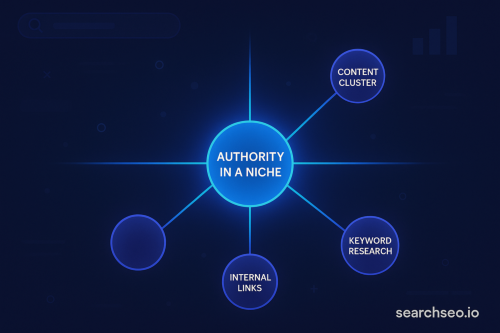Search Engine Optimization (SEO) is the backbone of online visibility. Done right, it can skyrocket your website’s organic reach, driving targeted, valuable traffic right to your doorstep. But SEO isn't just black or white—it's often grey. Understanding grey hat SEO means navigating a tricky middle ground where practices aren't explicitly forbidden but might skirt the edges of search engine guidelines.
In this guide, we'll unravel grey hat SEO meaning clearly, dive into its techniques, examples, and associated risks, and help you understand where it fits between the clearly defined territories of white hat and black hat SEO.
What is grey hat SEO?

Grey hat SEO refers to strategies that aren't clearly defined as acceptable (white hat) or strictly prohibited (black hat) by search engine guidelines. Essentially, grey hat tactics sit in the murky middle, leveraging techniques that could offer quicker SEO wins, albeit with potential risks.
To better grasp this, let’s briefly contrast grey hat with other SEO types:
- White Hat SEO meaning: Completely ethical strategies, fully aligned with search engine guidelines, and designed for long-term, sustainable growth.
- Black Hat SEO definition: Aggressive tactics designed explicitly to manipulate rankings, often violating guidelines, risking severe penalties.
Difference between white hat, black hat, and grey hat SEO
Understanding these differences is crucial:
- White Hat SEO: Ethical, safe, sustainable.
- Grey Hat SEO: Ambiguous, moderately risky, possibly rewarding.
- Black Hat SEO: Unethical, highly risky, short-lived gains.
Understanding the SEO spectrum
White hat vs grey hat SEO
White hat techniques build lasting authority by creating quality content, optimizing user experience, and playing strictly by the rules. Grey hat SEO, by contrast, involves slightly bending these rules, employing tactics such as buying expired domains or using click-through rate (CTR) manipulation, methods not clearly condemned but potentially problematic.
Black hat vs white hat vs grey hat SEO
Clearly distinguishing these categories:
- Black Hat SEO: Cloaking, keyword stuffing, link farms, explicitly against guidelines.
- White Hat SEO: Organic content creation, structured markup, natural link-building—fully compliant and endorsed.
- Grey Hat SEO: Purchasing backlinks (in moderation), using private blog networks discreetly, manipulating social signals cautiously.
Recognizing this spectrum helps safeguard your SEO strategy from unintended penalties.
Common grey hat SEO techniques
SEO techniques broadly refer to strategies implemented to improve search engine rankings and visibility. Common grey hat SEO techniques include:
Buying expired domains with established authority
Purchasing expired domains that still have backlinks and redirecting them to your main site to boost authority quickly.
Guest posting excessively
Publishing too many guest posts mainly for backlinks rather than adding real value, which can appear manipulative to search engines.
Keyword stuffing subtly within metadata
Adding extra keywords into meta titles, descriptions, or alt text to influence rankings without visibly stuffing page content.
Creating doorway pages
Making multiple low-value pages targeting small keyword variations that all funnel users to the same destination. These pages often exist solely to manipulate rankings for long-tail queries across multiple variations.
Artificially boosting CTR
Using bots, software, or incentivized clicks to simulate user engagement signals (clicks, dwell time) on SERPs. The goal is to make a page appear more relevant to search engines.
Parasite SEO
Publishing an article on a high-authority domain such as Medium, Forbes Councils, or public publishing sites to rank for competitive terms you wouldn’t otherwise rank for on your own domain.
Subdomain leasing
Renting subdomains from high-authority sites (e.g., news sites) to artificially boost rankings.
Reputation manipulation
Creating fake profiles, reviews, or branded mentions to inflate topical authority.
Mass page generation
Creating hundreds or thousands of thin, templated pages to target long-tail queries quickly.
Examples of gray hat SEO
Concrete examples illustrate grey hat SEO clearly:
- Expired domain redirects: Purchasing expired domains with backlinks and redirecting them to your main site to transfer authority.
- CTR manipulation: Using software to artificially inflate click-through rates on search engine results pages (SERPs), influencing perceived relevance.
- Excessive guest posting: Flooding blogs with guest posts containing backlinks to your site, bending Google's rules on natural link-building.
Risks and benefits
Like any tactic, grey hat SEO has pros and cons:
Benefits:
- Quicker rankings and traffic boosts.
- Temporary competitive advantage.
Risks:
- Potential penalties from search engines.
- Short-lived results and possible long-term brand damage.
- Increased monitoring and uncertainty.
Best practices and recommendations
While tempting, grey hat techniques require caution. If chosen, minimize risks:
- Avoid overuse of questionable tactics.
- Regularly monitor Google's algorithm changes.
- Prioritize content quality and relevance, even if using grey hat methods.
Ultimately, staying mostly within white hat practices ensures long-term, sustainable growth.
Grey hat audit checklist
Use this checklist before deploying any questionable technique:
• Does this tactic violate any explicit Google policy?
• Would I be comfortable explaining this tactic publicly?
• Does the technique produce real value for users?
• Can I reverse or remove the tactic quickly if needed?
• Is my backlink profile becoming too unnatural?
• Are there safer white hat alternatives?
If you answer “no” to 3+ questions, avoid the tactic.
Moving forward with a balanced SEO strategy
Understanding grey hat SEO, its techniques, and the potential outcomes helps you make informed decisions to grow your website sustainably. Grey hat SEO techniques are best partnered with robust white hat strategies.
SearchSEO's CTR manipulation tool can effectively augment your efforts but should never be the sole technique you rely upon. Using grey hat tactics can be beneficial if done cautiously.
Ready to explore safely? SearchSEO offers a free 3-day trial, allowing you to see how ethical CTR manipulation can enhance your SEO strategy. Try it today.


.svg)

.svg)
%201.png)








.svg)